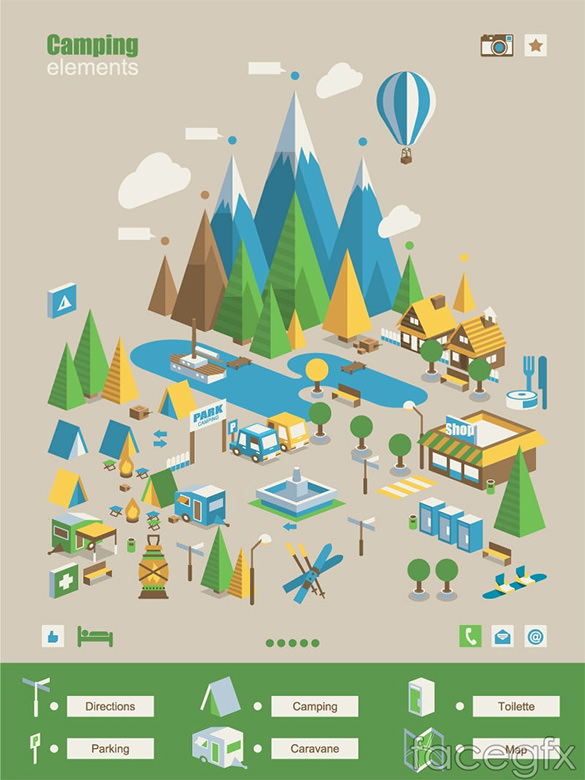Bell outdoors tents are becoming progressively prominent as functional, stylish shelters for camping and glamping. Yet what's the background behind this long-lasting style?
Which information is a must have when camping?
Henry Hopkins Sibley patented the single-pole conelike tent that we know as a bell camping tent. Nonetheless, he abandoned to the Confederacy and never received his nobilities.
Eventually, another person included brief wall surfaces to the cone cover and invented what we now referred to as a bell camping tent.
Beginnings
The appeal of bell outdoors tents is growing, and they're now a staple at camping celebrations and as elegant yard hideaways. Their sizable interiors offer a versatile home from home atmosphere that's suitable for family members and teams of buddies, while the circular style helps with security in solid winds.
The layout of the modern-day bell camping tent can be traced back to army outdoors tents made use of by European militaries throughout the Crimean Battle in 1853-1856. After that, in America, a soldier called Henry Hopkins Sibley patented a comparable framework that attracted ideas from American Tipis.
Both layouts are still in operation today. Nonetheless, Sibley tents differ from their more recent cousins because they have side wall surfaces and an elevated bigger entry. Sibley outdoors tents additionally rely upon a solitary main post for assistance that makes them less complex to establish however restricts setup choices.
Function
Bell camping tents' distinct shape and roomy interiors make them the perfect choice for a large range of outside activities. Whether you're hosting a backyard camping party, glamping at a remote all-natural hideaway or taking place an impressive fantasy-inspired journey, the adaptability of these camping tents makes sure that your experience will be comfortable and stylish.
The bell-shaped tent was initially patented in 1856 by Henry Hopkins Sibley, who had actually created the style after observing Native American tipi tents. Nonetheless, he surrendered from the United States Army at the break out of the Civil War, waiving his civil liberties to future aristocracies.
Ever since, the style has become a staple of several glamping experiences. These lavish camping tents typically feature plush bed linens and en-suite washrooms, providing campers the chance to appreciate nature without giving up convenience.
Design
In the modern day, bell outdoors tents have actually experienced a revival in popularity, as individuals seek a much more immersive outdoor experience. They are made use of in a selection of settings, including outdoor camping, glamping, and events. Their unique form, large interiors, and reasonably simple assembly make them a preferred option for those seeking an elegant, historical flair to their outdoor experiences.
The distinct shape of a bell tent develops high ceilings and adequate headroom, making it comfy to stand in and move around. On top of that, the facility pole is not positioned near the entryway of the tent, permitting even more privacy and room inside camping the shelter.
The bell tent layout traces back to an American soldier named Henry Hopkins Sibley, that was influenced by Native American tipi outdoors tents when establishing his version of the bell outdoor tents in 1856. His style was a substantial enhancement over standard army outdoors tents, which were challenging to transport as a result of their complex construction.
Products
In modern times, Bell Tents are crafted from exceptional materials that are developed for durable sturdiness. This is why they are a popular selection among entertainment campers, festival-goers, and glampers alike.
In the 19th century, an US Military officer called Henry Hopkins Sibley adapted standard tents right into what is now called the modern bell outdoor tents. He based his design on Indigenous American Tipi structures, including short wall surfaces to the central pole structure that made it much more secure.
Today, polycotton canvas is a common product used in the building of bell tents. This mix of cotton and polyester offers a vast array of benefits, consisting of breathability, superior weather condition resistance, and less complicated upkeep than pure cotton canvas. This textile is also long lasting and abrasion-resistant. It is thicker than most nylon textiles, nonetheless, which can make it heavy and a lot more pricey than normal camping tents.
Modern day
In modern day, the appeal of Bell Tents has blown up thanks to glamping websites and festivals offering up these sizable tents for couples, teams and families to take pleasure in. The visual appeal and toughness of these circular camping tents are interesting several campers.
Whether it be rain or wind, these camping tents hold their very own against the aspects. Typically, they're made with canvas that is treated to secure versus moisture, mildew and UV rays.
What is minimum Trail weight for a tent?
It isn't clear specifically when these camping tents were designed, however it's extensively understood that they're a variation of a Sibley outdoor tents - named after Henry Hopkins Sibley, that adapted the style of the American Indian tipi. It is thought that whoever included brief walls to Sibley's cone cover was accountable for the production of the bell camping tent as we understand it today.
